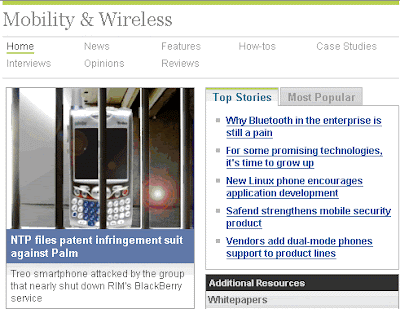As a journalist at Computerworld Australia:
With less than a month before its kick-off, organisers of the world-renowned linux.conf.au will this week announce the final keynote speaker, who is also set to represent a shift in the traditional technical focus of the event.
The 'Seven Team', the group which is in charge of organizing the event, will formally introduce former game developer turned author, Kathy Sierra of Wickedly Smart. Sierra, whose motto is 'creating passionate users', is being introduced to promote a more user-centric perspective to what has traditionally been a highly technical community.
Sierra joins microkernel legend Dr Andrew Tanenbaum and Chris Blizzard, of One Laptop Per Child fame, on LCA's list of keynote speakers for 2007. Each of the three speakers has been chosen for their prominence in one of seven streams at the conference.
Tanenbaum will address the theme of Deep Kernel Hacking; Blizzard will discuss Free Culture; and Sierra will speak on the subject of User Experience. Other streams are: Programmer Tools and Methodology; Systems Administration; General Interest Kernel; and a category with the rather broad-ranging name of 'Cool Stuff'.
The streams have been hand-picked by members of the Seven Team, which consists of Linux Australia members Jeff Waugh, Pia Waugh, Sara Kaan, Jamie Wilkinson, Ben Leslie, Lindsay Holmwood and John Ferlito.
Each year, LCA is organized by a different volunteer team that has to bid against other teams for the privilege to run the event. After winning a bid against Melbourne, the Seven Team will be the first to bring the conference to Sydney since 2001.
The event will be held at the University of New South Wales from January 15-20, and owing to the big city location and the expected pleasant summer weather, organizers expect about 800 participants to attend.
"We're increasing the size of LCA by about 160 percent," said Pia Waugh. "Usually, LCAs are about 500 people, but considering it was in Sydney and we felt that we had the audience here, we thought we'd experiment with increasing the size of the conference. We're doing fairly well on that."
According to a post last week on Jeff Waugh's blog, registrations have already exceeded the 500 mark.
Another first in registrations for LCA 2007 is the introduction of the LinuxChix miniconf, which is a community organized stream that aims to highlight women's work in free software. The stream has encouraged a very high proportion of females to register, Pia Waugh said.
Waugh was also surprised to note that LCA 2007 will also be the first LCA event in which the Debian miniconf has not been the most popular amongst registered participants; instead, participants have registered most interest in the topic of Virtualisation.
Besides Australian participants, Open Source enthusiasts from countries including Serbia, Mongolia, the Philippines, U.K. and the U.S. have registered to attend the LCA. The conference has even inspired stunts by groups like Please Send Us to Linux.conf.au in a plea for sponsorship to the event.
"LCA has got a fantastic reputation globally as being the world's best technical open source conference," said Pia Waugh. "Every year we have people like Linus [Torvalds], Keith Packard, Bdale Garbee, Dave Miller, lots of really famous names who come to the conference and love the conference.
"It's very much a community event where great people come together to talk about great things, and the fact that your average young hacker who's only just started in the community can rub shoulders with the best in the world ... not only keeps the community close and exciting and interesting, but also [provides] a way to grow the future of the community to give new people the opportunity to participate and play," she said.




